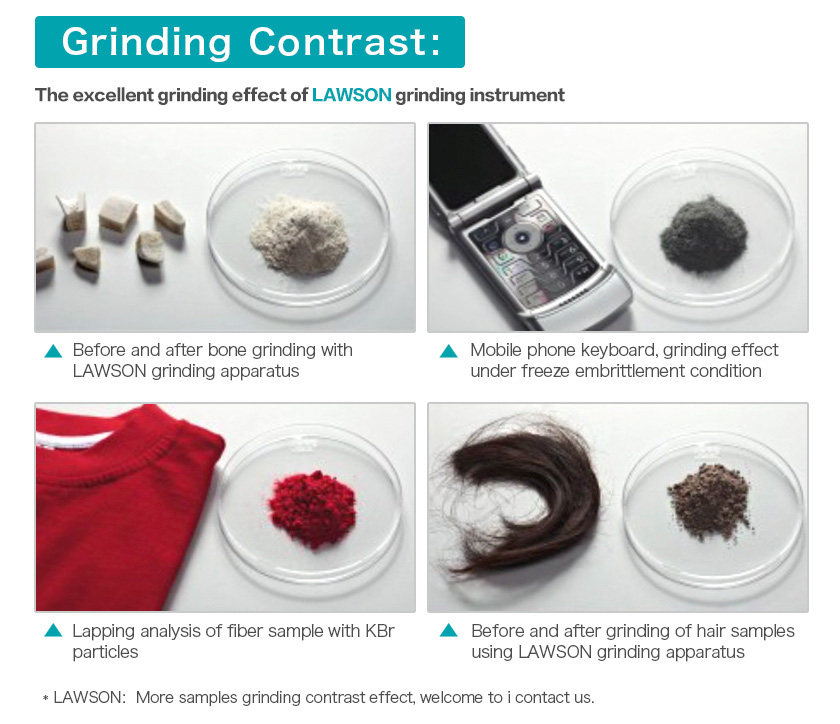|
Product Applications |
|
Sample types suitable for grinding: |
|
1. Plant tissues: roots, stems, leaves, flowers, fruits, seeds, etc. |
|
2. Animal tissues: brain, heart, lungs, stomach, liver, thymus, kidneys, intestines, lymph nodes, muscles, bones, etc. |
|
3. Fungi and bacteria: yeast, E. coli, etc. |
|
4. Food and drugs: various types of food, pills, etc. |
|
5. Volatile samples: coal, oil shale, wax products, etc. |
|
6. Plastics, polymers: PE, PS, textiles, resins, etc. |
· Nucleic acid/protein extraction
Low-temperature grinding can effectively inhibit nucleic acid degradation and preserve protein activity. |
· Analysis of pharmacologically active ingredients
There are often significant differences between isomers of pharmacologically active ingredients. Low-temperature grinding can prevent molecular degradation due to pressure and heating. |
· Reduced sample volatility
Low-temperature grinding can significantly reduce sample volatility and more completely preserve the content of sample components. |
· Grinding tough/hard samples
For difficult-to-grind samples such as high-toughness plastics, high-strength plastics, and resins, low-temperature grinding can greatly improve the grinding effect and efficiency. |
 |
|
The DHFSTPRP-HP24 rapid hair grinding instrument adopts a special vertical up-and-down integrated vibration mode, which achieves the desired effect quickly through the high-frequency reciprocating vibration, impact, and shear of the grinding beads (zirconia, steel beads, glass beads, ceramic beads). This results in more complete and uniform grinding of the samples, with better sample repeatability and no cross-contamination between samples. |